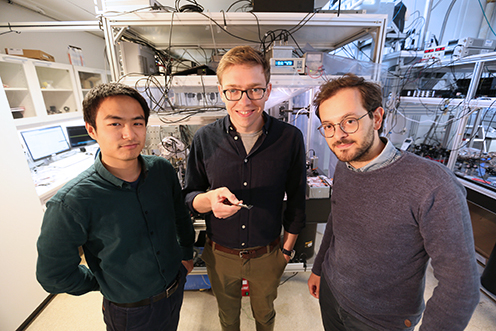Hy-Q-researchers bring new standard for precision in quantum measurements
For more than 50 years, quantum researchers have tried to push the so-called SQL limit for precision in sensitive quantum measurements. Now, a research team from the DNRF’s Center for Hybrid Quantum Networks (Hy-Q) at the Niels Bohr Institute has solved the problem with the help of a simple modification. Thus, the research team has developed a new standard for precision measurements of force and position on a quantum level. The result was recently published in the scientific journal Nature Physics.

In November of last year, the DNRF wrote an article about a new research method for quantum measurements developed by a research team from the Niels Bohr Institute and the Center of Excellence Hy-Q. Read the article about the method for quantum measurements here. Using the method, the same research team, including Yeghishe Tsaturyan, the two Ph.D. students Chen and Rossi, and post-doc David Mason, and Professor Albert Schliesser, has pushed the limits for precision measurements of force and position on a quantum level. Their experiment is the first ever to beat the so-called “standard quantum limit” (SQL), which occurs in the most ordinary optical techniques for ultraprecise position measurements.
“The SQL is something of a gold standard for the quality of a measurement. It is nothing that can’t fundamentally be overcome, but as far as force and position measurements are concerned, it turned out to be very hard. Even LIGO [the Laser Interferometer Gravitational Wave Observatory] isn’t there yet. But with our system we thought we should stand a chance,“ said Professor Schliesser, senior author behind the study.
Mason, a post-doc at Hy-Q and lead author of the study added:
“Once we knew we could get very close to the SQL, the modifications required to beat it were actually rather straightforward,” Mason explained. He continued: “We are using quantum effects that arise in the measurement setup itself, so the extra technological effort is actually limited. That is good news for potential practical applications.”
